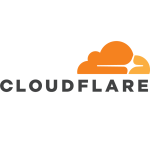What is our primary use case?
My company provides different types of support for different products. I am a Microsoft Azure support engineer for Azure Active Directory.
We work with multifactor authentication, federation, synchronization of on-premise services to the cloud, migrations from on-premises to the cloud, and role-based access to company services. I also work with the identity services of Azure. I work with certain cases where customers have issues with Office 365. That's because the administration and the role-based access come from the Azure platform.
We're in the middle of the transition to unify more services. There are many services in terms of networking with the machines and storage accounts.
Azure is a platform, so it doesn't have a version.
How has it helped my organization?
Microsoft 365 is a part of the service of Active Directory. Currently, all the people and institutions, such as schools and universities, working from home are getting the benefits of Microsoft 365 in Azure Active Directory. They are indirect users of Azure Active Directory. That's because all the services are with the Azure platform, and all these identities are managed from the cloud. This service is providing a huge contribution to the whole world at this time. For example, my nephew is not going to school currently, but he has to connect every day through Microsoft Teams. I know that it is Active Directory that's managing this authentication, but he doesn't know that.
Azure provides many services related to security, data protection, identity, key networking, and management of the storage accounts with encryption. The whole environment is very secure. Azure works with the security of the services. It is in the backend, and it is the same platform as Microsoft 365 or Office 365. So, if you have Office 365, you're using Azure. The platform source is the same for Azure and Office 365 or Microsoft 365. It is the same platform to manage the users. At a certain point, I guess everything will be together because even though there are too many services, all of them rely on the same platform.
There is a secure way of managing the security and access to your services. If you use Azure in your company, you can manage the type of authentication that you want to use for security. For example, you can manage your company from on-premises and also use the cloud in a hybrid environment. This way the services that Azure provides on the cloud are available for the users that exist on-premises, and this is actually where I'm working right now.
What is most valuable?
The most important things of Azure Active Directory are the security and the facility to manage all the services and users. It is very easy to manage users and assign roles, permissions, and access. At the same time, it is a very secure environment. Microsoft takes security very seriously. They take care of all the security and all the factors to prevent any kind of data or information compromise.
For data protection and access security, there are many good things that Azure and Azure Active Directory offer. You can choose in how many ways a user can log in to Azure, especially with multifactor authentication. You can choose how, when, and where someone can access a service that you may have on Azure Active Directory.
For most of the small users, Azure Active Directory is free. So, they don't need to have a paid service for Azure Active Directory.
The platform is constantly changing. Every month, we have new services, and we also have services that are being deprecated to provide a better customer experience. For example, we have a tool that connects the users that exist on-premises to the cloud. The AD connects to this synchronization tool, which has been improved about five times in the last year. Every new version is more flexible with more options. The experience for the users has been improved to make it easier to manage the tool. In addition, the feedback that the customers provide to Microsoft is taken very seriously. For example, there were some authentication features that, for security purposes, had certain limitations. Those limitations still exist, but the portal now has options so that the customers can make custom features to manage their identity. There is a feature called manage identities where you can give flexible access to a person for services. For example, I can give you access as a reader to all my information but only for 12 hours or 24 hours. So, I can decide for how long I want to give you access. In the past, I had to give you a role that was permanent, and now, I can give you a role that will last only a few hours to allow you to do your job. In case you need more time or more features, you need to contact me and request them.
Similarly, previously, there weren't too many options when you were synchronizing your users from on-premise to the cloud. Now, the system that allows you to make that synchronization has many options. You can select different schemas. You can select which users you want to be a part of the cloud. You can manage many rules. The customization in the whole Azure platform is awesome. All these features that are now a part of the platform were not there in the past. In these three years, I have seen so many changes. There are too many features, and I can see changes every month. There are too many settings that have been improved, especially related to authentication, permissions, and auto management ops. The cloud or the Azure platform is managed by roles that you can assign to different people, and each role has different permissions and access. So, everything is very customizable right now.
For how long have I used the solution?
I have been working with Azure Active Directory for two years.
What do I think about the scalability of the solution?
Scalability is one of the main features of Azure. You can adjust the services that you have., You can increase them anytime, and if you are not using them, you can downgrade the services to the minimum. The scalability and elasticity are the key features of Azure. They allow you to manage all the resources that you have according to your needs. For example, if you are a big company that is going to have a lot of customers during a period and needs to duplicate or triplicate resources, you can get all those created immediately. When you don't need that many virtual machines, storage accounts, or web services, you can downgrade to the minimum. The pricing will be according to the service that you are using. This is one of the most attractive things for the customers because if you were on-premises, what would you do with all those desktops once you don't need them. On the cloud, it is different. If you don't need it, just remove the service, and you won't be charged. It is very flexible.
How are customer service and support?
I provide support for Azure AD. This is my area of support currently, but sometimes customers have questions about different products or services. Because I'm working on Azure Active Directory, it doesn't mean that I only know about this specific product. We are constantly learning and getting trained. There are too many things to learn more about the Azure platform. I have worked for the billing and subscriptions team, which is a totally different type of support. If a customer has questions about billing, subscriptions, pricing, and discounts available on the platform, I can provide support. If a customer needs help with creating a virtual machine, I can tell the customer to work with another team. If I have the knowledge, I go the extra mile and help them.
There have been situations where the customers had a ten-year-old server that was no longer supported, and all the services were very old. They were from the time when Azure started, and those services are called classic services. Most of those services are not compatible with today's technologies. In such cases, we had to let the customers know that they need to migrate the services, which can get tough for some of them because not all users have the resources to move services to new technology. In such cases, we work with other teams within our own company and try to find a solution. We always try to find a solution. We are not limited to one solution. We'll research for options and do some brainstorming with other teams, and most of the time, there are no cases that we can't close or are unsolved. Of course, customers might have been expecting a different solution, or they are not open to change, but at a certain point, they will need to accept that some of the resources that they have been using for more than 10 years are now obsolete.
How was the initial setup?
It is very simple. All you need to do is to create a subscription. When you create an Azure subscription, you will be creating an Azure account. If you are using Office 365, you already have an Azure Active Directory account.
If you go to Azure.com and use your credentials, you would be able to log in. So, you have a basic panel with services related to Active Directory, but if you need to deploy virtual machines or other paid services, you will need to purchase a subscription. I have my own environment, but I only use it for testing and for making records of customer issues to see what's happening or why the problem is coming.
It is a very easy-to-manage platform. There are many guides. As soon as you enter the portal, you will see all products and services. Every time you click on any specific service, you will find information about the service, its pricing, etc. You will get the required information needed on the platform. I also have experience with IBM's platform, but it was not as easy to handle as the Azure platform.
What's my experience with pricing, setup cost, and licensing?
The basic tier of Azure Active Directory is free, so many users use the service for free. For a small company having the security and compliance that Azure offers is a great benefit. For small companies that are using the basic services, not having to pay for Azure Active Directory is the main asset because they can manage their users and have authentications tools and security.
You just need to create an Azure account to get a free trial or subscription. If you sign up for a free subscription, you will have $200 that you can use for a month on any services that you want to try or test. If you're planning to use a paid subscription, you can't have the first month for free until you spend those $200. At that point, you can decide if you want to continue using the platform. You will be paying only for the services that you use. If you have a virtual machine, but you don't use the virtual machine, you won't be charged for that virtual machine. There are, however, some limitations. If you choose to have storage linked to the virtual machine, the storage is charged differently.
Azure has different tiers. You can use the standard free version. You can have the B1 license that gives you more services. There is a B2 license that extends to even more objects, more users, and more services. So, depending on the license that you have for the product, the capacity changes. The basic tier allows you to manage a certain number of objects, which can be users, groups, permissions, etc. The number is limited because you are using the free version. If you want to manage a bigger company or more objects, you can just purchase a B1 license. If you need more, you can change to the B2 license that's a top tier.
If the size of your company changes or you need to reduce the number of licenses or services, you can always cancel licenses. You can go back to the lower tier at any time depending on your needs. Most of the big companies use the higher tiers because they have many employees. In domains like education, there are many students, so they need to use more licenses, but most of the small companies or users who are using it for a project use the free version.
If you need to purchase a service, for each and every service that Azure offers, there are different pricing tiers. For example, you don't have to purchase a virtual machine that is too expensive. There are basic virtual machines that may cost you $40 for one month. If you need a very specific machine to do a deployment, you can use it just for the deployment and then delete the virtual machine. You have to pay it only for the hours for which you used that machine, which is a great advantage. If you work with data processing or you're a developer who needs to test new software or a game, you don't need to pay a huge amount of money for a specific virtual machine. You will only be paying for the hours that you need to do the testing. You don't have to pay $6,000 for high-end technology. I know that the idea is to keep people using the virtual machine, the storage account, or any service they have, but if their needs are just limited for a few hours of the month, that's what they will be paying for. So, it is very flexible.
What other advice do I have?
I would recommend Azure Active Directory to everybody. I would recommend others to use it to easily manage all the users. If you are dependent on an on-premises server, those servers may fail. Some people have too many old servers. If you move to the cloud, you don't have to worry about hardware maintenance.
Microsoft offers several ways to keep your data safe on the cloud. For example, you can choose replication. That means that your data will be at two different data centers. You can have your information at two different locations, such as in the east of the USA and in the west of the USA. If you are paying for higher services, all your information can also be in another country or region. So, all the information that a company may have in Azure will be protected if something catastrophic happens, which is something very important, especially for large companies.
The improvements to the platform are constant, and the feedback that the customers provide to Microsoft is taken very seriously. They have a feedback page where the users can request new features or existing features that they are not happy about. Microsoft takes into account all these requests, and I see the response from the backend team or developers. I can see how they provide new products or good information about what they are doing right now to improve the services. Most of the requests are for new services and ideas, and most of those ideas are seriously reviewed. I can see that over the last few years, how many of these requests have become a part of the platform. So, you see improvements everywhere. There is also a change in Office 365, which will be soon known as Microsoft 365. They're changing the experience, and they are also changing the licenses to include more products. So, changes are constant. I am not saying this because I work for Microsoft. I have also worked for Amazon, and I see similar structures. They are making changes all the time.
Every day, I see the requests of customers and the response from Microsoft to those requests. When all these improvements are added to the platform, for those of us who are on support, the cases become easier to manage. It gets easier to provide solutions because we have more options to resolve the problems, and the customers also have more options.
There are times when customers don't realize that the platform has changed and the services they used don't exist anymore. Usually, we provide support through Microsoft Teams and remote sessions. So, we go there, and we explain to the customer that they can do this because the platform allows them to select this and then do customization. So, everything is flexible. The customers sometimes are very surprised because they don't know that the platform has changed so fast. The experience of providing support becomes very nice when a customer is amazed by all the new features. They had been working in the old way, and they didn't know that they now have many options on the platform. In such cases, it is a very satisfactory experience for the customer and also for us. In some cases, it takes about 10 minutes, and the problem is solved. The customer becomes very satisfied with the solution.
I would rate it a 10 out of 10. I can't tell how happy people are when they call and are looking for such a service, and they realize that it already exists. They just didn't know about it. This rating is not based on the experience that I have in working with Microsoft; it is based on the experience of the customers I work with.
Disclosure: My company has a business relationship with this vendor other than being a customer. Partner













